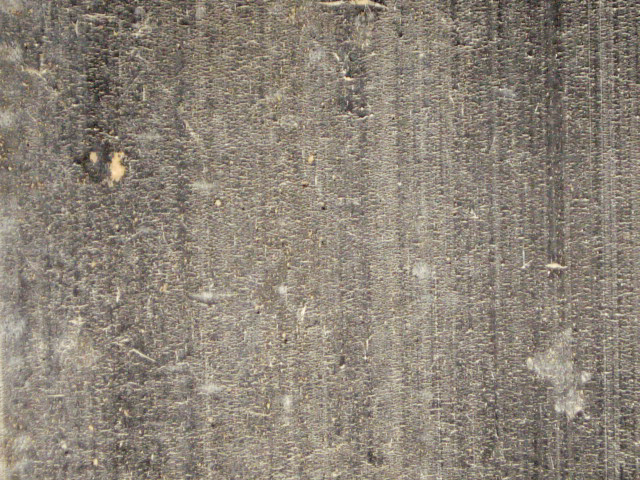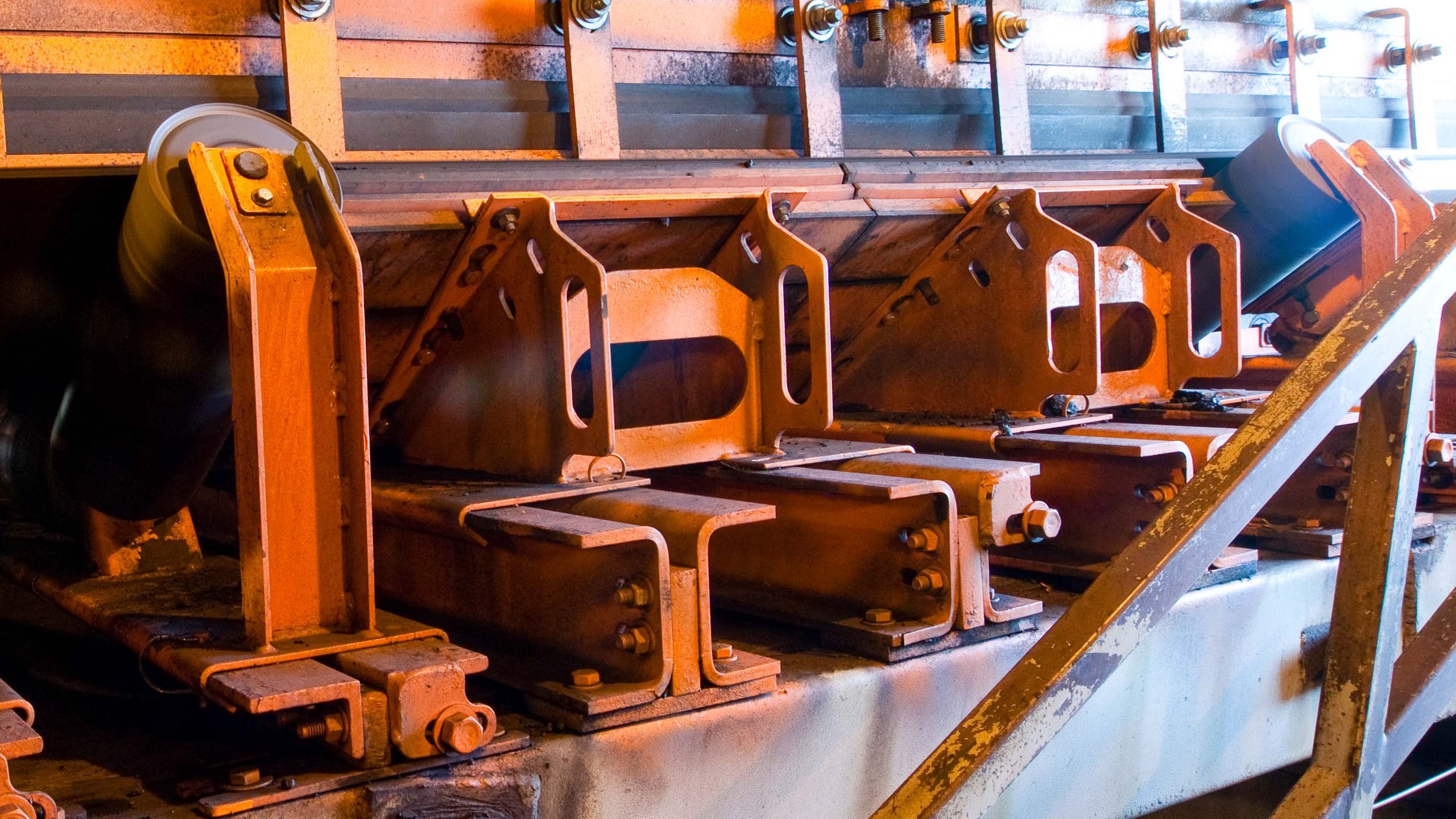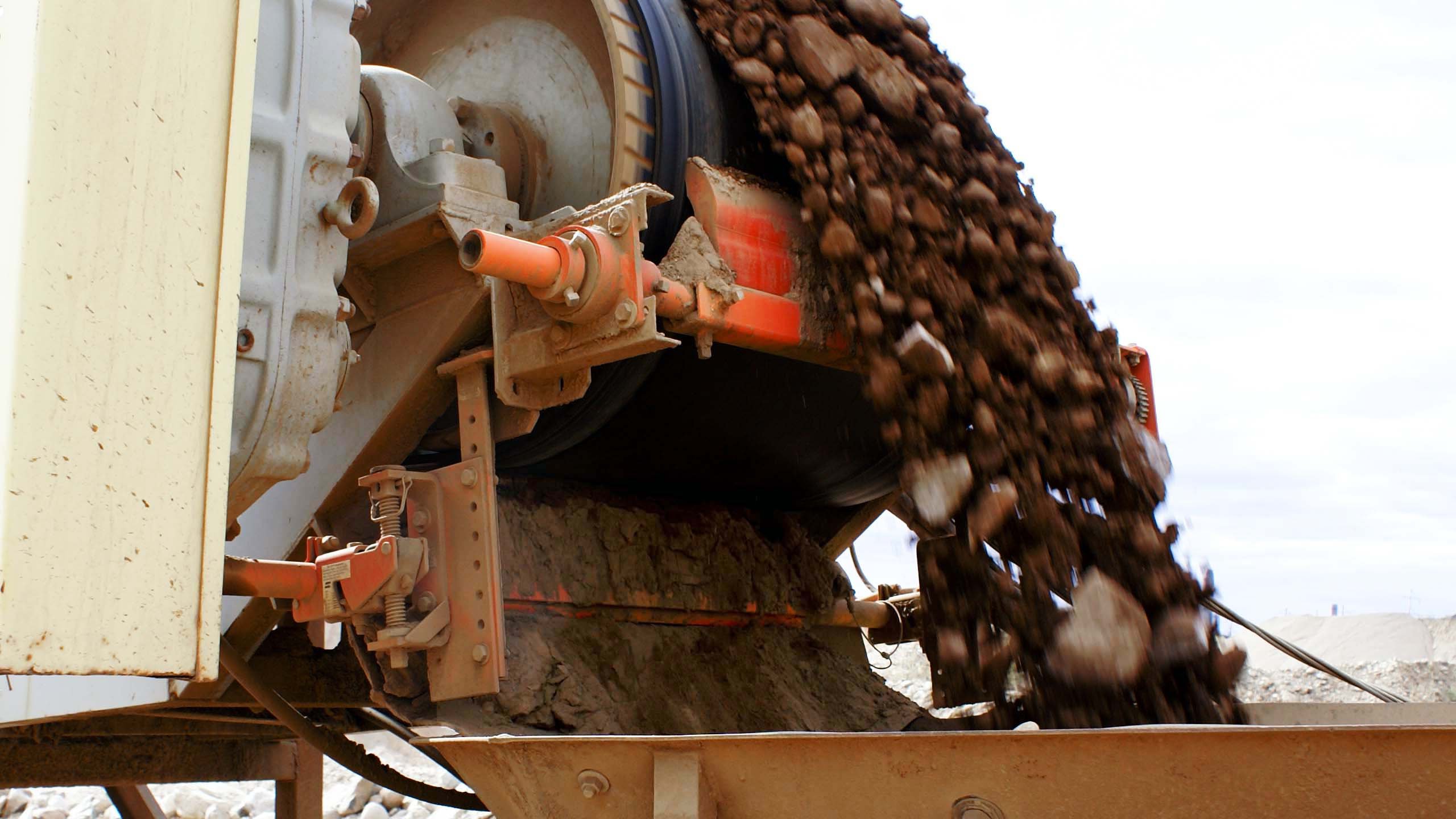There are two types of abrasion that occur on conveyor belts. One is caused by the material rubbing against the belt cover. As a woodworker sanding an object, this wear is relatively even under the influence of the material pressing against the surface. The actual rate of abrasion will depend on the nature of the material, as modified by the density of material loading and the speed of the belt. This is called impingement damage.
Click here to watch the full on-demand webinar.
A more aggressive form of abrasion is the damage to the surface by sharp-edged materials that cut or gouge the belt. This is generally called impact damage.
Click here to watch the full on-demand webinar.
There are two types of tests used to measure belt cover wear. One is the ISO 4649 Types A and B Abrasion Test Methodology (Formerly DIN 53516). This test uses a sample of the rubber cover and holds it against a rotating abrasive drum for a fixed interval. The cover sample is weighed before and after to calculate volume loss. The lower the number (the less material lost), the more resistance to abrasion.
A second method of testing is the Pico Abrasion Test, also referred to by the American Society for Testing and Materials (ASTM) as ASTM Test Method D2228. In this test, tungsten carbide knives are used to abrade a small sample of the belt cover. As above, the sample is weighed before and after the procedure, the weight loss is calculated. Results are given as an index, so the higher the number, the better the abrasion resistance.
Most references caution that neither test should be seen as a precise prediction of actual performance in field applications.
New Developments in Belting
A recent innovation is the development of energy-efficient belt covers. Called Low Rolling Resistant (LRR) Covers, these bottom covers reduce the tension required to operate the belt, because there is less roller indentation resistance as the belt moves over the idlers. According to manufacturers, this belting can produce operating energy consumption savings of 10 percent or more. The savings occur where the rubber belting meets the conveyor system’s idlers. The energy-efficient cover has less rolling resistance because the bottom cover returns to a flat configuration more quickly than conventional belts, which deform as they go over the conveyor’s rolling components.
The manufacturer notes that the benefits of this energy-efficient cover can best be realized on long horizontal conveyors utilizing wide, fully-loaded belts carrying high-density material, where the friction of the system is dominated by idler-related resistances. The LRR compound is at a premium cost over other cover compounds. However, on those installations where the benefits can be fully realized, the compound compensates for its additional expense through a reduction in power costs and, on new systems, by allowing the conveyor to be equipped with smaller motors, pulleys, gearboxes, shafts, bearings, idlers, and steel structures.
Users cannot assume that an LRR cover will reduce operating expenses, nor can they specify LRR, as each belt is compounded for a specific application. The relationship between the power consumption with an LRR belt and temperature conditions is not linear and there is typically a small window of application. A specific LRR bottom cover designed to save energy at 20 degrees may cost more to operate at 0 or 30 degrees, so each belt must be designed for the climate conditions of each application.
Another new development in belt construction is the use of non-stick belt covers, to prevent belt-borne carryback. This belting is created by applying a non-stick coating to the belting to prevent the accumulation of carryback material on the belt. This coating should reduce the need for belt cleaning, thereby extending belt life by reducing cover wear. This coating is also resistant to oil and grease and unaffected by weathering and aging. It should be noted that conventional belt cleaners (scrapers) should be removed if using a nonstick belting, as the “cleaning edge” of even “soft” urethane pre-cleaners might remove the coating.
Conveyors are designed as a system, and any changes from the original belt specification can adversely affect the operation of a conveyor. Belting manufacturers should be consulted to determine which belting type is most appropriate for any application.






















Leave Comment